Sources say that GE Vernova's investigation found that the offshore wind turbine plant at Quebec was not operating to standards.
Sources familiar with the situation said that GE Vernova’s offshore wind turbine production plant in Quebec has terminated or suspended several employees after a company probe found they had taken shortcuts when it came to quality control. GE Vernova began the investigation at its factory in Gaspe in Quebec, after one of their 107 meter-long turbine blades broke at the Vineyard Wind Project off the coast Massachusetts in July. The project was temporarily stopped after shards of fiberglass were found on the beaches. GE Vernova, through its subsidiary LM Wind Power, owns the Gaspe Plant.
Hurricane Rafael has caused a shutdown of 17% of the U.S. Gulf of Mexico Oil Production
The U.S. Bureau of Safety and Environmental Enforcement announced on Wednesday that Hurricane Rafael had shut down approximately 17% of crude production and 7% of gas output in the U.S. Gulf of Mexico. The Bureau reported that energy producers have shut down 304,418 barrels of oil per day and 131,000,000 cubic feet of gas production from Gulf waters. According to the latest U.S. National Hurricane Center advisory, Rafael, a hurricane of Category 3, was located approximately 70 miles (110 kilometers) south of Havana, Cuba. It had maximum sustained winds (185 kph) with 115 mph.
Deep sea oil drilling drillers are now subject to new safety regulations in the US
The Bureau of Safety and Environmental Enforcement, or BSEE, released new rules on Tuesday for U.S. off-shore drillers. This is because breakthrough technology allows them to operate in extreme subsea conditions and unlock untapped oil reserves worth billions of dollars. BSEE final rule was issued after Chevron, in August, started production on its Anchor asset. It is owned by TotalEnergies and it was the first project ever to operate with 20,000 pounds per sq inch (PSI) pressure. The reservoir depths reached 34,000 feet (10.363 m).
Vineyard Wind and GE Vernova Release Action Plan Overview of Blade Removal Operation
Vineyard Wind and GE Vernova released a plan on Friday outlining the steps that should be taken following a turbine blade collapse last month on the Vineyard Wind project offshore off the coast Massachusetts. The failure left potentially hazardous debris on the beaches of Nantucket. Vineyard Wind was the first major offshore wind farm in the United States. The plan details the steps that must be taken to retrieve the remaining blade from the turbine. The plan was developed with the U.S. Bureau of Safety and Environmental Enforcement and U.S. Coast Guard in consultation, according to a joint statement.
U.S. Needs to Revive Shallow-Water GoM E&P
The US should define the Gulf of Mexico Shallow Water Province as a distinct entity to avoid stranding more than $20 billion of its oil and gas resource, said a new research.According to a research from the Bureau of Safety and Environmental Enforcement (BSEE) and Bureau of Ocean Energy Management (BOEM) the GOM Shallow Water Province, comprised of water less than 200 meters deep, is a historically energy-rich area which now produces natural gas, accounting for 33% of the gulf’s gas production and just over 10% of its oil production.Production and infrastructure investment used to be substantially higher in the Shallow Water Province…
Storm Cut 73% of US Offshore Production
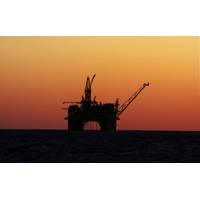
Tropical Storm Barry has cut 73%, or 1.38 million barrels per day (bpd), of crude oil production in the U.S.-regulated areas of the Gulf of Mexico, the U.S. Bureau of Safety and Environmental Enforcement (BSEE) said on Sunday.Natural gas output from the northern Gulf of Mexico is down 62%, or 1.7 billion cubic feet per day, BSEE said.A total of 283 production platforms, or 42%, remain shut in the Gulf of Mexico, BSEE said.(Reporting by Erwin Seba Editing by Nick Zieminski)
Trump Administration to Revise Offshore Safety Rules
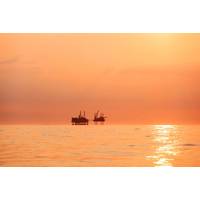
The Trump administration will unveil on Thursday its final plan to roll back offshore drilling safety measures put in place by the Obama administration after the fatal 2010 BP Deepwater Horizon oil spill, the worst in U.S. history, raising concerns by some groups over potential risks to workers and the environment.The Interior Department will announce the final revised rule at an afternoon event in Port Fourchon, a Louisiana seaport that services over 90% of the Gulf of Mexico’s deepwater oil production.Last year…
API Enhances Offshore Safety Standard
The American Petroleum Institute (API) released its newest valve standard as part of the industry’s continuous efforts to improve operational safety and environmental protection.According to a release from the agency, the “Specification 6A” governs the design and operations of the critical safety valves at wells used in the offshore and onshore oil and gas industry. The latest edition includes new automatic closure requirements, to ensure additional protection for workers and the environment in loss of power and…
US GoM Oil Production Off 32% from Storm
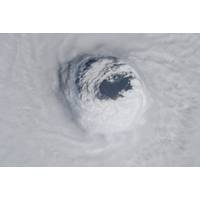
U.S. Gulf of Mexico producers have cut oil output by 32 percent and natural gas production by 13 percent as a result of the lingering effects of Hurricane Michael, the Bureau of Safety and Environmental Enforcement (BSEE) said on Friday, citing reports from 27 companies.The reductions continued as oil and gas companies moved more workers back to production platforms that were evacuated earlier in the week. As of Friday morning, nine platforms were still unoccupied, BSEE said in a daily update, down from 89 platforms on Wednesday.It can take several days after a storm passes to inspect platforms…
Storm Shuts Nearly 40% of US GoM Oil Output
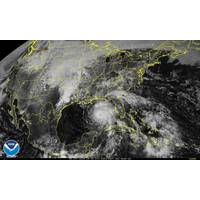
Nearly 40 percent of daily crude oil production was lost from offshore U.S. Gulf of Mexico wells on Tuesday due to platform evacuations and shut-ins ahead of Hurricane Michael.Since Monday, oil producers, including Anadarko Petroleum Corp, BHP Billiton, BP and Chevron Corp , have evacuated personnel from 75 platforms as the storm made its way through the central Gulf on the way to landfall on Wednesday on the Florida Panhandle.Companies turned off daily production of about 670,800 barrels of oil and 726 million cubic feet of natural gas by midday on Tuesday…
GoM Offshore Platforms Evacuated Ahead of Hurricane
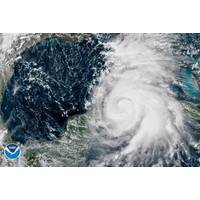
Energy companies on Monday halted nearly a fifth of Gulf of Mexico oil production and evacuated staff from 10 platforms as Hurricane Michael intensified and headed for a path up the eastern U.S. part of the Gulf.BHP Billiton, BP, Equinor and Exxon Mobil Corp were evacuating personnel from oil and gas platforms in the Gulf as forecasters predicted the storm would become a Category 3 hurricane.Companies turned off the daily production flow of 324,190 barrels of oil and nearly 284 million cubic feet of natural gas at midday, according to a survey of producers.
US Gulf Oil Output Takes a Hit from Storm
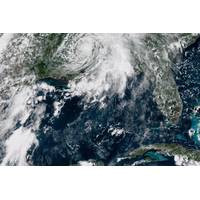
Tropical Storm Gordon forced a cut of 9.36 percent of crude oil production in U.S.-regulated areas of the Gulf of Mexico, slightly more than Tuesday, the U.S.
BSEE Regs Update to Cut Burden on Operators
The Bureau of Safety and Environmental Enforcement (BSEE) – incorporating industry innovation, best science, and best practices – is proposing to update regulations covering offshore oil and gas drilling operations to improve reliability, safety, efficiency, and environmental stewardship, and reduce unnecessary burdens on operators. BSEE reviewed the existing regulations in response to Executive and Secretary’s Orders instructing it to identify ways to reduce unnecessary regulatory burdens while ensuring that offshore oil and gas drilling operations are conducted in a safe and environmentally responsible manner.
BSEE Approves Arctic Offshore Suspension Requests
The Bureau of Safety and Environmental Enforcement (BSEE) approved suspensions of operations Tuesday in response to requests from the Arctic Slope Regional Corporation Exploration, LLC (AEX) related to AEX’s 20-lease Taktuk Unit, and one additional lease, in the Beaufort Sea. The leases, which are located in the Camden Bay area, approximately 8-25 miles off of the northern shore of the Alaska North Slope, were obtained by AEX from Shell in late 2016. An Alaska Limited-Liability Company formed in 2008, AEX is a subsidiary of Arctic Slope Regional Corporation, which represents the business interests of the Arctic Slope Iñupiat.
EnVen bags NOIA Safety in Seas Culture of Safety Award
The National Ocean Industries Association (NOIA) presented EnVen Energy Corporation with the 2018 NOIA Safety in Seas (SIS) Culture of Safety Award today during the association’s annual meeting in Washington, DC. EnVen Energy won the Culture of Safety Award in recognition of its remarkable safety culture transformation between 2013 and 2017. David Carmony, Chief Operations Officer for EnVen Energy accepted the award.“EnVen is honored to receive this prestigious safety award from NOIA,” said Carmony. “The transformation of EnVen’s safety culture has allowed us to achieve our goals…
BSEE Inspects New Shell Appomattox Platform
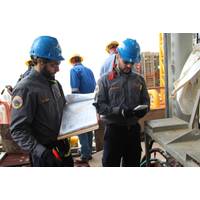
As Shell finishes construction on its Appomattox Semi-Submersible Platform hull, Bureau of Safety and Environmental Enforcement engineers and inspectors signed off on several topsides components during a pre-production inspection March 27, 2018. Royal Dutch Shell plc, 79 percent owner and its partner, Nexen Petroleum Offshore U.S. A. Inc., a wholly owned subsidiary of CNOOC ltd, will operate the platform about 80 miles off Louisiana’s coast in the Mississippi Canyon. “The Appomattox will be Shell’s largest floating platform in the Gulf of Mexico,” said Anthony Pizza, BSEE New Orleans District Production Operations Section Chief.
BSEE Ramps up Quality Assurance Measures
The U.S. Bureau of Safety and Environmental Enforcement (BSEE) has implemented a new quality assurance process for reviewing and assessing its permitting systems. The new process seeks to reflect on permits issued by the agency and helps inform best practices for offshore energy permitting. The new directive, issued by BSEE’s Office of Offshore Regulatory Programs, requires the agency to conduct periodic review and assessment of permitting processes for consistency, timeliness and efficiency across the various districts and regions within the agency.
BSEE Launches Risk-Based Inspection Program
The Bureau of Safety and Environmental Enforcement (BSEE) this week announced the implementation of a new Risk-Based Inspection Program that employs a systematic framework to identify facilities and operations that exhibit a high-risk profile. The risk-based inspections supplement BSEE’s existing National Safety Inspection Program. The OCS Lands Act authorizes BSEE to conduct annual scheduled inspections and periodic unannounced inspections of all oil and gas operations. The new risk-based inspection protocol looks beyond compliance and assesses the integrity of critical safety systems on facilities and operations…
BSEE : Investigation Report into Subsea Jumper Leak
The Bureau of Safety and Environmental Enforcement (BSEE) released the panel investigation report on the May 11, 2016 subsea jumper leak on a platform operated by Shell Offshore, Inc. The leak from Green Canyon Block 248 occurred on Subsea Well #4, resulting in an estimated release of 1,926 barrels of oil. The BSEE investigation panel concluded that the loss of containment in the Glider subsea system was caused by the ductile tensile overload fracture of the Load Limiting Joint of the Glider #4 jumper. The ductile…
BSEE: Report on Subsea Bolting Technology Released
In an effort to address a recurring problem with faulty connectors in critical safety equipment, the Bureau of Safety and Environmental Enforcement (BSEE) commissioned a National Academy of Engineering study on the matter in September 2016. After 18 months of study, the report entitled “High-Performance Bolting Technology for Offshore Oil and Natural Gas Operations” was published Friday. BSEE sponsored this study to leverage the resources of the National Materials and Manufacturing Board of the National Academies of Sciences…
